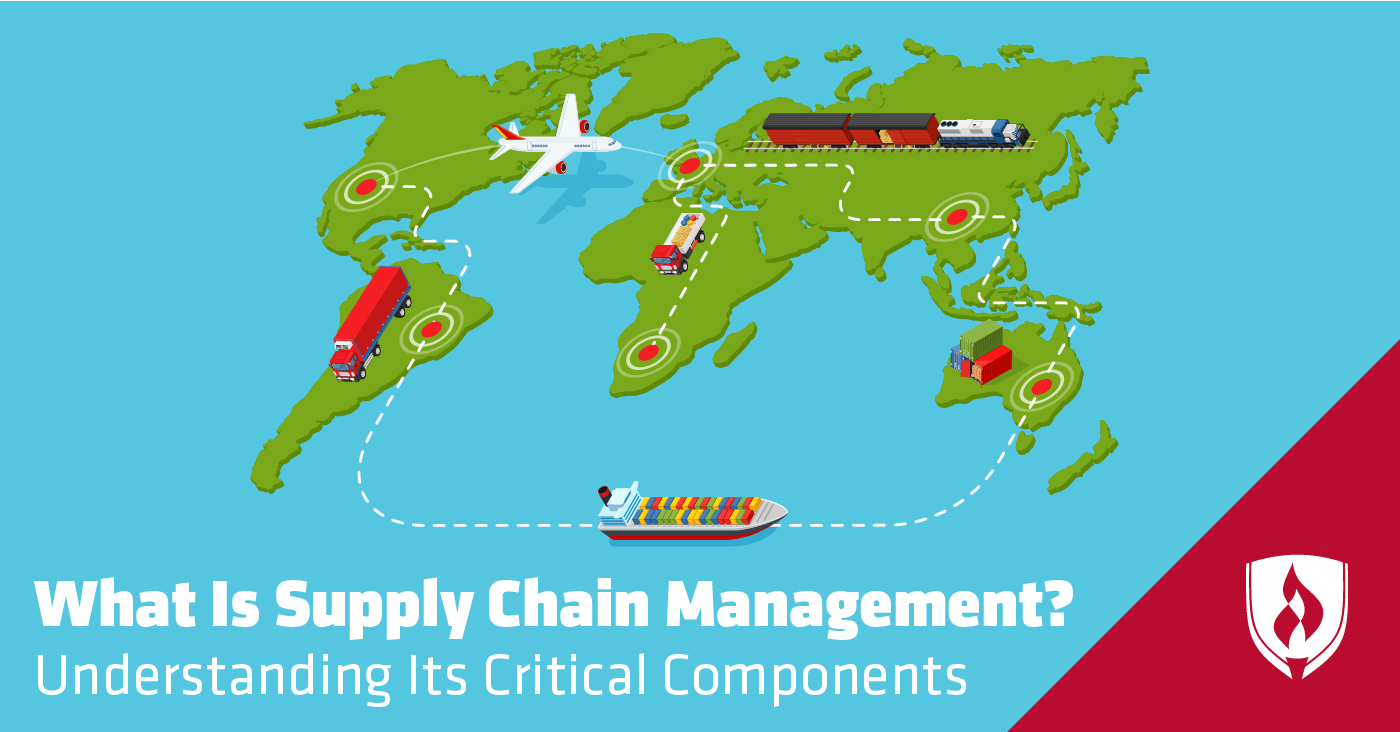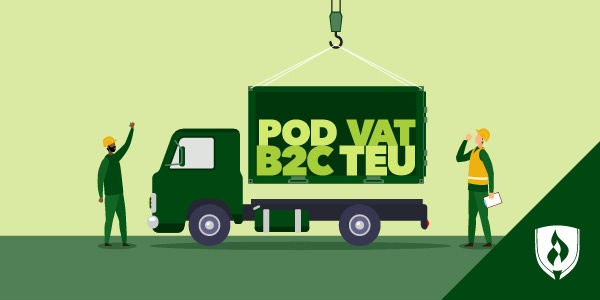What Is Supply Chain Management? Understanding Its Critical Components
By Ashley Brooks on 02/11/2019

You’re wandering the aisles of your favorite store when you notice a couple employees wheeling a cart full of products out from the storage room. As they unload boxes and begin stocking shelves, you start thinking about the journey those items had to take before they arrived at this store for customers like you.
That journey is known as the “supply chain,” which is the system of steps organizations follow to manufacture and distribute a product. Many people never give a second thought to the origin of the items they buy, but you’re truly intrigued by the process. You might even be considering a career in supply chain management!
So what is supply chain management? This logistics profession organizes all the details behind the scenes so companies can deliver their goods to the customers who need them. Find out more about the road from product development to delivery in this breakdown of supply chain management.
14 Components of supply chain management
Professionals who work within the supply chain are part of a team that works together to produce high-quality products efficiently and on budget. Each step of the process is vital to ensuring the financial health of the organization and to meeting customers’ expectations.
The Institute for Supply Management (ISM) breaks the supply chain into 14 separate components.1 Rather than being a step-by-step process, these components are ongoing job duties, with each one typically handled by a group of specialists within the supply chain. Read on to discover what it takes to bring a product from the manufacturing floor to store shelves!
1. Disposition/investment recovery
Sometimes an organization needs to get rid of product they have on hand due to issues like an overstock of inventory, a change of product line or a problem with quality. Disposition is the process of transferring those unneeded products to a different organization, whether through a sale or other methods. Smart supply chain professionals use investment recovery techniques to regain as much money as possible from disposition.
2. Distribution
Distribution is the process of getting material goods from the manufacturer to the end customer. Tasks associated with distribution include storing, transacting, packaging and shipping. Some companies exist solely as distributors who serve as the middleman between manufacturers and consumers.
3. Inventory control
Inventory refers to how much of a product an organization has on hand. Inventory control professionals try to strike the perfect balance of inventory, so they keep a close eye on details like when and how many materials to buy, which locations need additional stock and how to handle shortages and back orders.
4. Logistics
Logisticians manage the life cycle of a product from start to finish. They manage the cost and efficiency of production and the storage of raw materials, and they’re always on the lookout for ways to better serve their customers by reducing cost or time in the supply chain.
5. Manufacturing supervision
Manufacturing, which is typically overseen by several supervisors, is the actual making of a product that will eventually be sold. The manufacturing process differs greatly depending on the product, but every industry needs manufacturing supervisors and managers to coordinate production activities and train workers.
6. Materials management
Raw materials are the individual pieces used in the manufacturing of a product. For example, the raw materials of a shirt might include fabric, thread and buttons. Materials management is the organizational approach that plans how these materials will be used in production, including how much to purchase, where it will be stored and which locations require which materials.
7. Packaging
Anyone who has ordered an item online has experienced packaging firsthand. This refers to the container used to ship goods to their final destination, whether it be a store, business or a consumer’s home. Packaging includes boxes and other items used to protect the product during shipping, such as packing peanuts or Bubble Wrap.
8. Procurement and purchasing
Procurement and purchasing both relate to buying the materials needed to make a product. This job involves more than you might imagine. Purchasers are responsible for conducting market research, negotiating with suppliers to secure the best price and managing inventory to avoid shortages or overstocks.
9. Product and service development
Long before a new product can be manufactured, it needs to go through product development. In this initial phase of the supply chain, professionals conduct research, create product design ideas, engineer the product and plan for manufacturing requirements.
10. Quality
Most organizations develop a set of quality-control standards that every product must adhere to before it goes out the door to customers. In certain industries, such as automotive or healthcare, quality regulations are set by the government or other regulatory institutions. Quality-control inspectors closely examine products for physical defects or other problems. Products that aren’t up to standards are either sent back to manufacturing to be “reworked” and fixed, or they go through the disposition process.
11. Receiving
Professionals working in this area of the supply chain verify that the goods their organization ordered match what was received. They check for damaged items and accept and organize incoming shipments. Receivers often work in their organization’s shipping department as well.
12. Strategic sourcing
Organizations must carefully choose which companies or distributors to buy materials and supplies from. Supply chain professionals engage in strategic sourcing when they take price, reliability, material quality and their company’s long-term business goals into account before choosing which company to buy from.
13. Transportation/traffic/shipping
These three terms refer to the physical movement of goods from one location to another. Transportation decisions are made based on the cost, reliability and time frame of carrier options. Traffic isn’t only about how busy the roads and ports are, but also about the flow of materials management activities like scheduling and contracting with shipping carriers. Shipping professionals are responsible for packaging goods and transferring them to the shipping carrier.
14. Warehousing/stores
Products, materials and other supplies are kept in an organization’s warehouse or stores. Warehouse professionals are responsible for locating and organizing these goods, collaborating with supply chain managers about shortages or overstocks and maintaining accurate records of what inventory is currently being stored. They often work on the same team as shipping/receiving professionals.
Become part of the supply chain
The answer to “What is supply chain management?” isn’t as complicated as you once thought! Now that you know the ins and outs of these behind-the-scenes processes that keep organizations running smoothly, you might be wondering how a Supply Chain and Logistics Management degree could boost your future career. Find out with our article “What Can You Do with a Supply Chain Management Degree? 9 Opportunities to Consider.”
1Institute of Supply Management, Supply Management Defined [accessed February 5, 2019].




